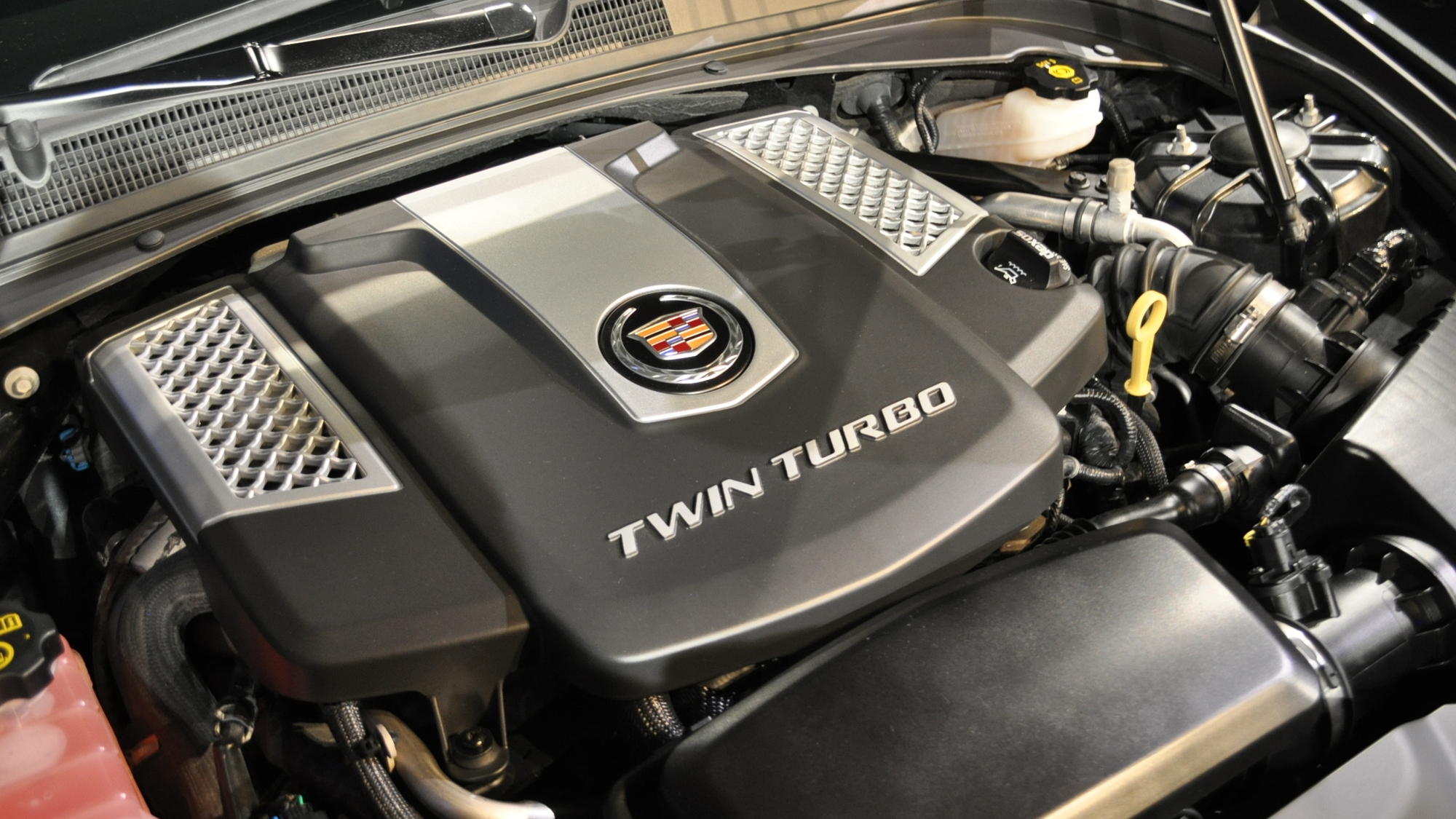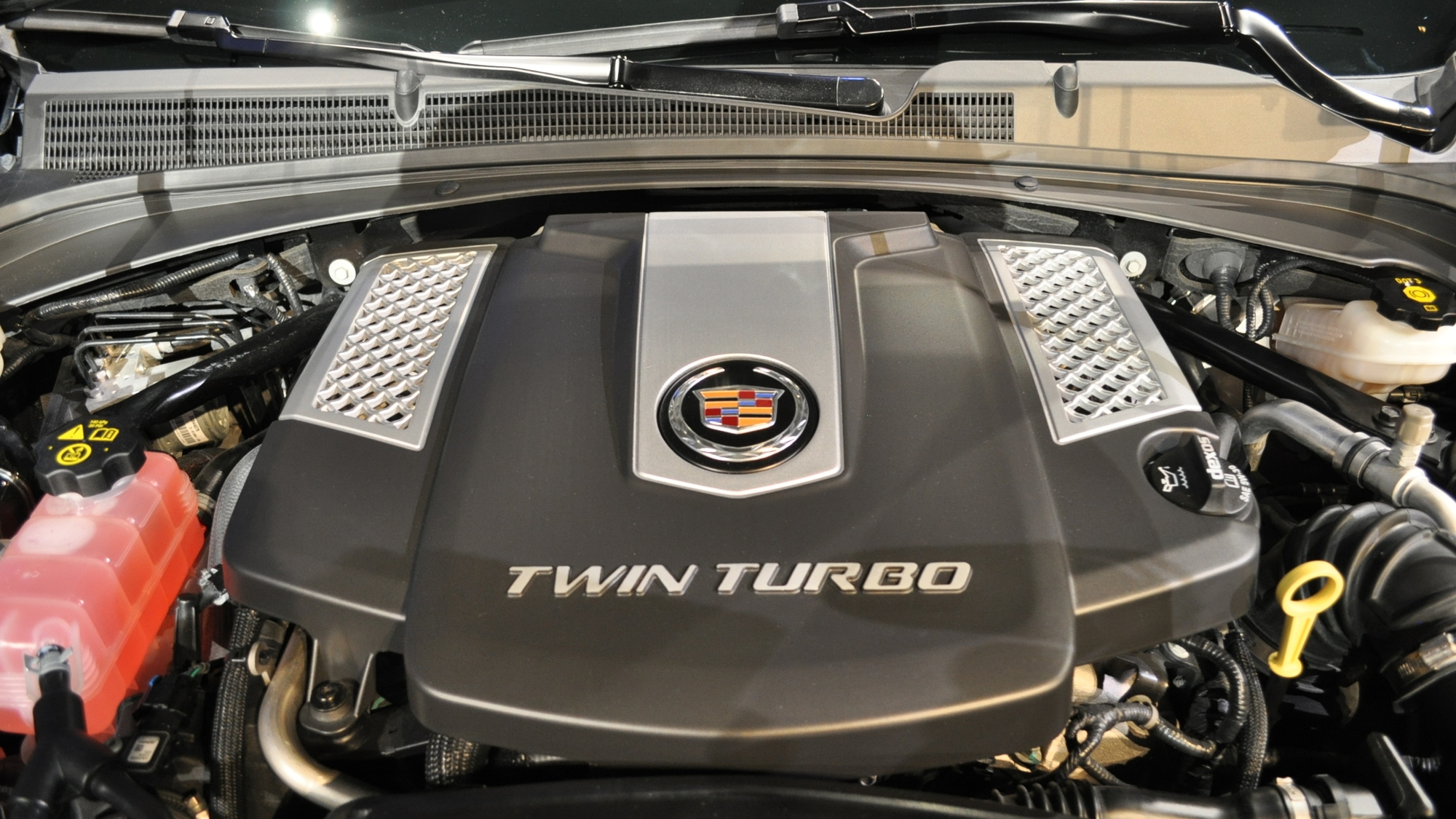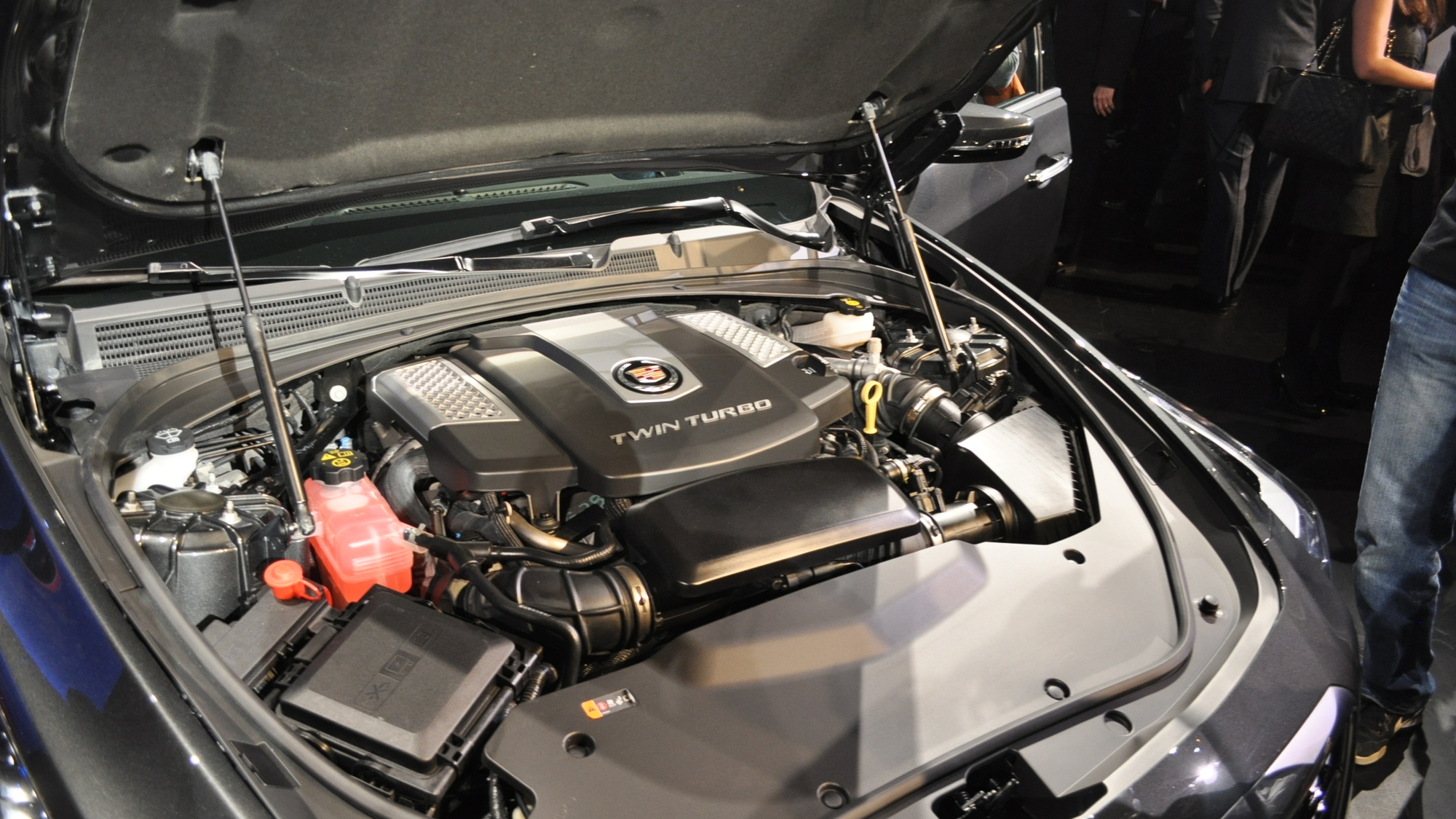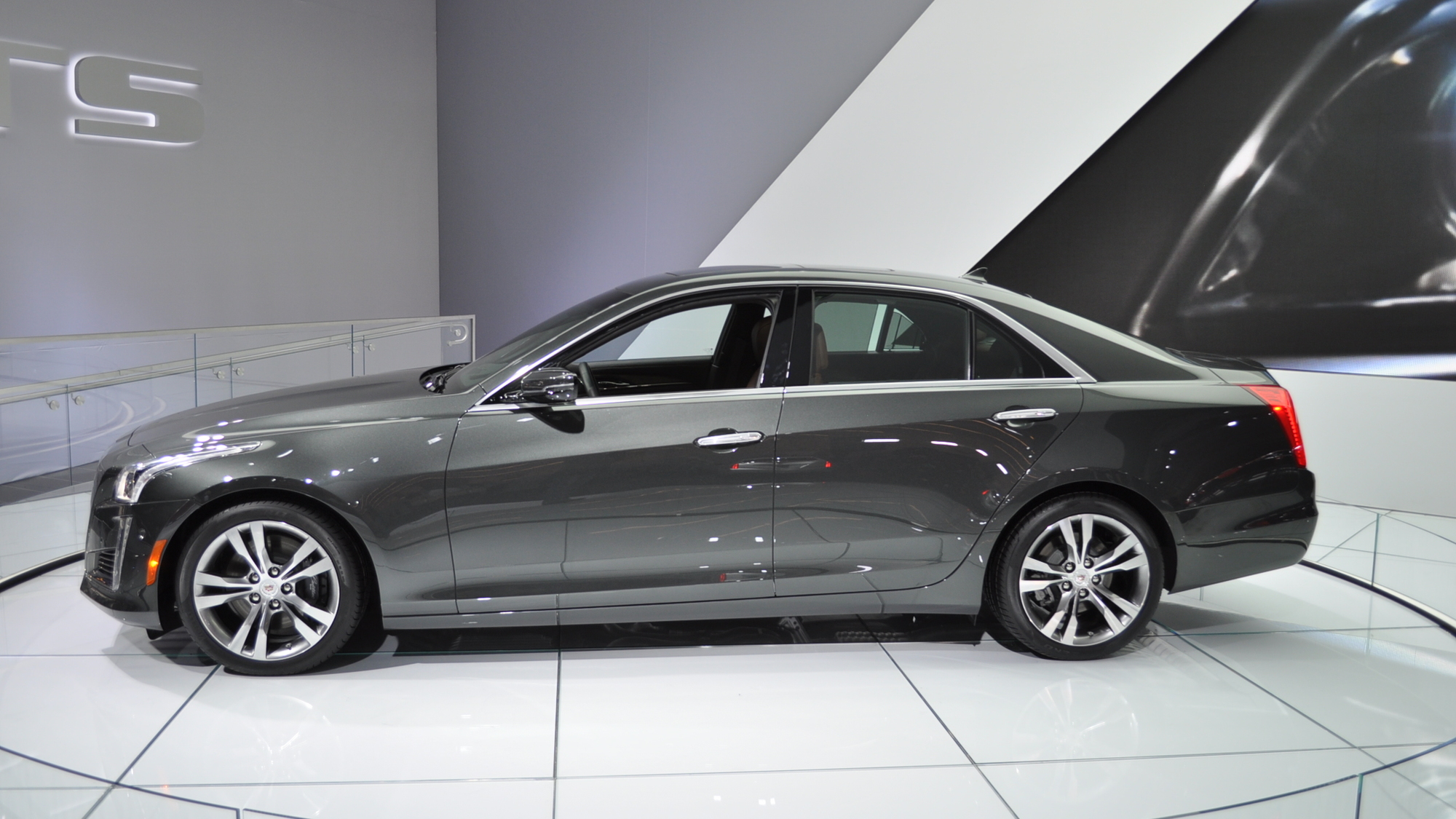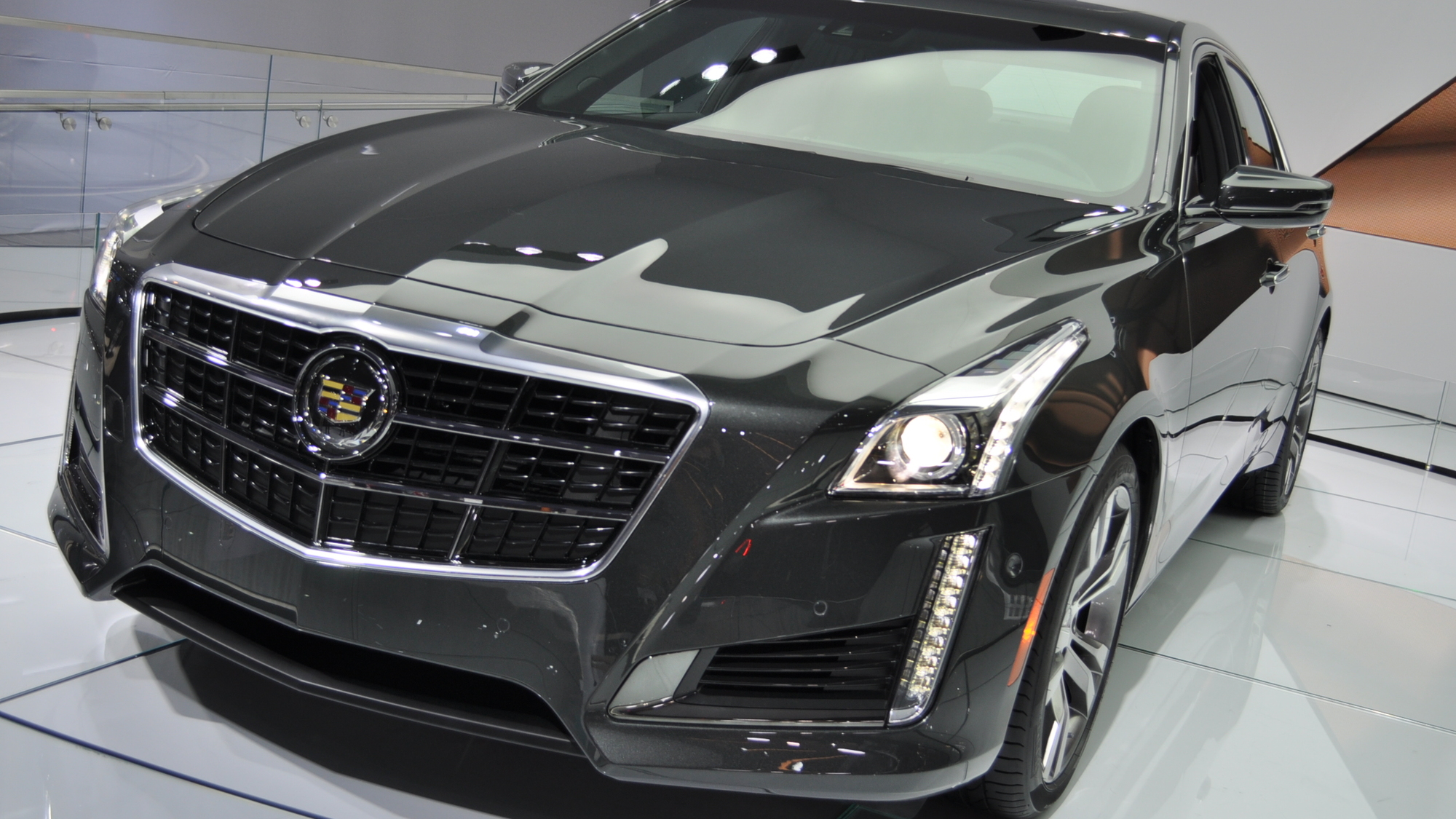Chances are, not much. And while it'll remain to see how it fares in real-world use in terms of both performance and reliability, this somniloquent video shows some of the thought and engineering that went into attempting to minimize turbo lag.
Cadillac's combination approach uses smaller turbos, shorter air paths, and a top-mounted throttle body to make the arrival of boost--and therefore power--as quick as possible.
"By creating a very short path from the turbos to the throttle body, the compressors are able to draw air directly from the inlet box and send pressurized air through the intercooler immediately," said Richard Bartlett, assistant chief engineer for Cadillac's 3.6-liter V-6.
As a result, the new twin-turbo V-6 delivers peak torque of 430 pound-feet from 1,900-5,600 rpm. Yes, 430 pound-feet at 1,900 rpm. That's 78 percent of the 556-horsepower, 551-pound-foot CTS V range's peak torque throughout most of the rev range, yet the 2014 CTS Vsport is estimated at 17/25 mpg--20-30% better than the current manual CTS-V's 14/19 mpg.
Read our preview for more details on the 2014 Cadillac CTS range.
_______________________________________
